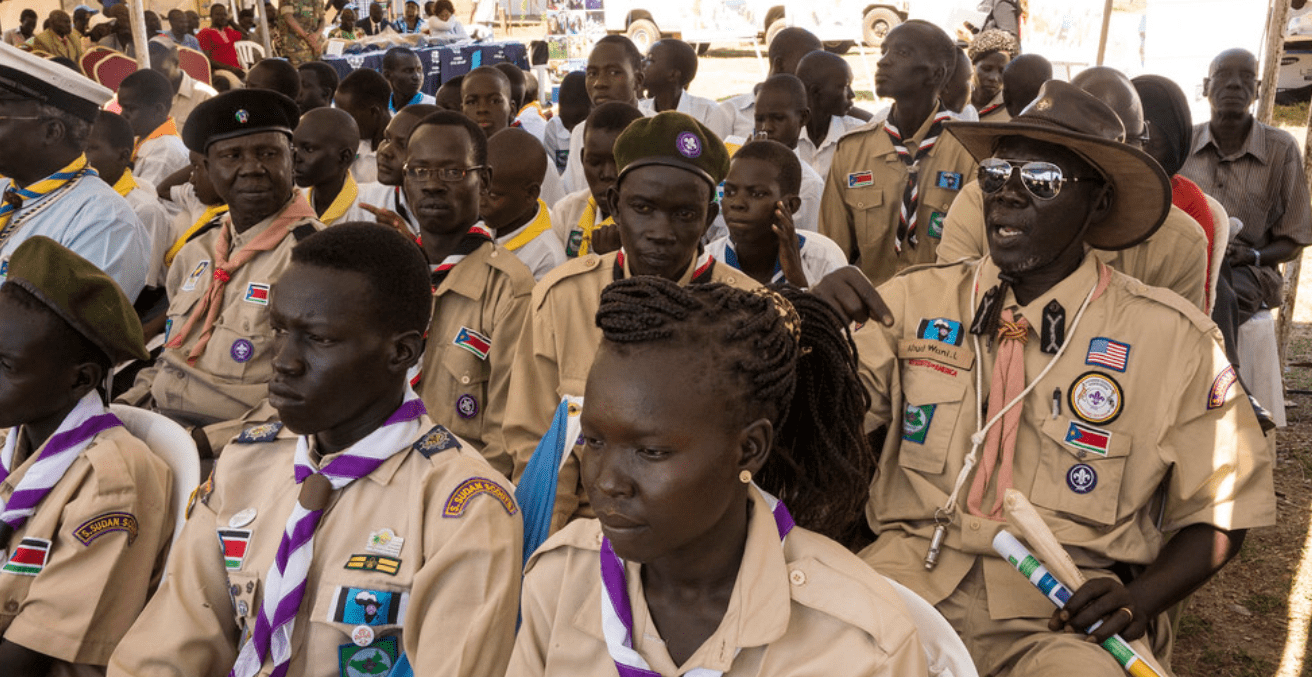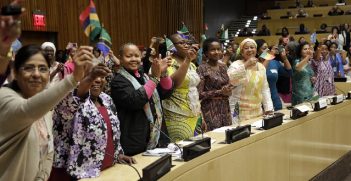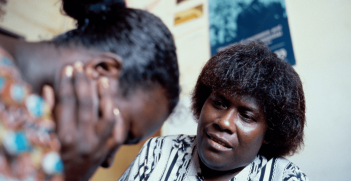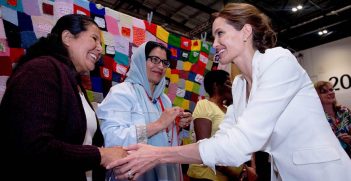Women's Exclusion from the South Sudan Peace Process

The Sudan–South Sudan case study shows that excluding women from formal peace processes creates serious consequences for the sustainability of peace post-settlement.
A striking characteristic of peace processes in civil wars is the near absence of women from both formal peace negotiations and official peacebuilding processes in post-war states.
Much has been written about the myriad roles women play in grassroots and community-level peacebuilding, including as peacemakers, peace activists, civil society leaders, political leaders, educators, facilitators, carers and humanitarians. But, despite often having significant influence in the early, community-level stages of peace processes, women are generally excluded when peace processes advance to higher, more formal levels of negotiation and implementation.
This is in spite of their participation being recognised as an essential aspect of inclusive social justice in peace processes, and UN Security Council Resolution 1325 mandating their inclusion at all levels of decision-making in peace processes. In fact, the absence of women from formal peace processes has been suggested as one of the key reasons that such processes fail to establish lasting peace.
The South Sudan case study
South Sudan is a pertinent case study to investigate the implications of women’s exclusion from a formal peace process. Although women played a myriad of roles in support of peace making and peacebuilding within their communities during the civil war between north and south Sudan, they were largely excluded from formal negotiations that led to the Comprehensive Peace Agreement (CPA) of 2005, and subsequent implementation, peacebuilding and state building processes.
South Sudan remained plagued by insecurity in the years after the CPA was signed, with ongoing violence prevalent in both social and political spheres, and state structures unable or unwilling to contain them. This escalated to the point of renewed civil warfare by December 2013, and has continued since despite attempts at negotiating peace, although the more recent peace negotiations are outside the remit of this article. South Sudan’s wars and peace process highlight the complexities of making and building peace when different groups remain locked in a web of overlapping conflict relationships and power struggles, marked by exclusion, patronage and corruption.
Towards the comprehensive peace agreement
During the decade of peace after the Addis Ababa Agreement, the changes to citizenship rights and political and economic systems in the South gave way for a shift in the role of women in society. On the one hand, women’s political rights were secured through the provision that guaranteed equal citizenship rights for all persons. On the other, the changes in the economic and political spheres meant that gender relations shifted.
When the war resumed in 1983, women continued to play important roles in society and politics; in fact, the conflict led to women’s increased independence as heads of households, combatants and administrators, as well as their active participation in hostilities as both combatants and providers of support to combatants. Nevertheless, women were pushed to the margins of official processes and peace negotiations.
The roles women played were threefold: as local peace activists, as the facilitators of grassroots negotiations and local peace accords, and as advocates on the regional and international stage.
Despite playing these various roles in peace making and peacebuilding during the war, women were nonetheless largely excluded from participating in formal North–South peace negotiations. Only three women were included in the CPA negotiations on the SPLA side, and while nominally negotiators, they were forced to act as observers, and were only admitted as a concession to the strong advocacy of women’s groups. Their participation was also limited by their male counterparts.
This exclusion and marginalisation within the talks was not because women lacked relevant skills, knowledge or positions in their communities. Women had extensive peace making experience and capacity to bring to the table, but were largely prevented from doing so as their roles, perspectives and experiences were not considered relevant to the resolution of the conflict. The talks instead treated women as simply victims of war, and were based on the assumption that conflict resolution required the division of power and resources between warring groups along political, geographical and ethnic divides. This is reflected in the final CPA, which is gender-blind and set the scene for women’s further marginalisation in official post-war processes and structures. Despite the quotas for women’s inclusion that were adopted in the National Constitution, women remain largely absent from decision-making and political power.
Their exclusion from formal state processes, combined with long-standing cultural norms particularly in rural areas that discourage women’s active participation in decision-making, have contributed to a reversal of the advances women made during the conflict in terms of increased independence and their adoption of leadership roles in their communities. This is particularly concerning in light of the high proportions of female-headed households in the country; in fact, after the war, the ratio of women to men was slightly more than 2:1 as a result of war-related deaths and displacement.
Frustration at this exclusion culminated in early 2013, when fractures in the fragile peace were becoming increasingly apparent. In a powerful statement, the Coalition of Women Leaders From Sudan and South Sudan demanded the substantive involvement of women in the country’s peace processes and for more transparent processes.
In addition to asserting rights-based demands for inclusion, this statement clearly connects the failures of the peace processes that had occurred, the exclusivity and lack of transparency of those processes, and the growing insecurity and divisions in South Sudan.
Dr Jasmine-Kim Westendorf is a Senior Lecturer in International Relations at La Trobe University.
This is an extract from her article, “Peace Negotiations in the Political Marketplace: the Implications of Women’s Exclusion in the Sudan-South Sudan Peace Process” published in the Australian Journal of International Affairs. For the full article click here.





